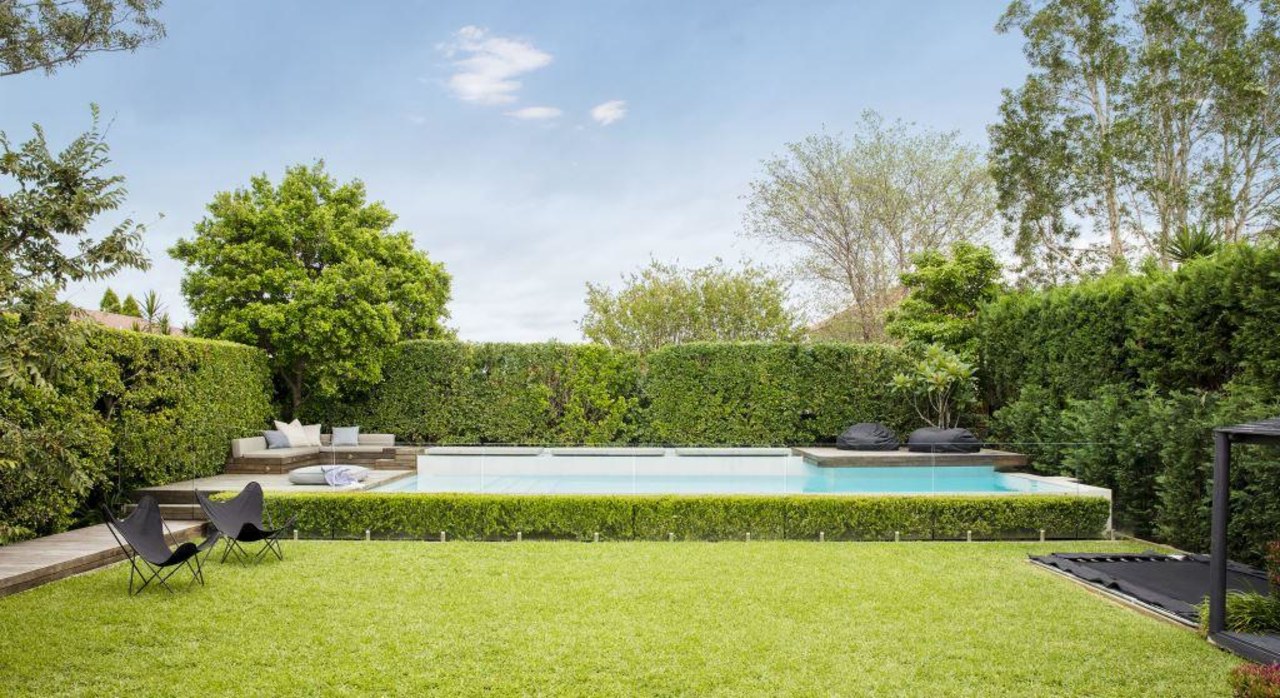Spring clean your garden
With thousands of award winning garden designs under his belt, and a long list of some of the country’s best gardens under the care of his Landart Landscape’s business, creative director Matt Leacy shares his top tips for ensuring your garden thrives this spring and summer
Via Matt Leacy, creative director at Landart Landscape
From Matt Leacy
1. Creating a luscious lawn
One of the best things you can do for your lawn as we come out of winter is to de-thatch. Thatch is an accumulation of dead organic lawn matter or a build-up of roots that can prevent moisture, nutrients and air getting through to the grass roots.
If you’ve got very large lawn spaces, you might consider using a de-thatcher to do the job. Otherwise, a thatch rake or normal garden rake should work, depending on the size of the lawn and how thick the thatch is.
You should also aerate the lawn to help get water and nutrients through to the turf zone. If you’re working with a big lawn, you might look at using a motorised aerator. Otherwise, you can use spiked aerator shoes or a simple garden fork.
Once you’ve removed thatch and aerated, add some course sand or top dressing over the lawn – and don’t forget to fertilise with something high in nitrogen, and preferably organic.
2. Maintenance will set you up for summer
It’s not necessarily the fun side of gardening, but now is the ideal time to get into garden beds and remove any weeds before the weather gets hotter and they really take off. And now is also the as time to prune plants to get them in prime condition for growth in spring and summer.
Ensure that any ornamental grasses like miscanthus are cut to about 100-200mm above the ground and that any shrubs such as bottlebrush that like to flower in spring are pruned well before their flowering month.
3. Mulching is the garden gift that keeps on giving
Mulch is a must when it comes to keeping your garden beds looking great in summer.
Mulch will help your soil retain moisture as the weather heats up – and it’s also helpful for keeping weeds at bay. And mulch can come in a variety of colours that can enhance your garden design.
I like to use an organic compost and a slow release fertiliser. Dig it into the soil by hand where possible, but be wary of applying too close to plant trunks and stems. Excess moisture can cause stems to rot, so it’s generally best to mulch at least 50-70mm thick and to keep the mulch well away from stems and trunks.
As the weather gets hotter, keep an eye on your plants and keep topping mulch up.
4. Re-design and plant out garden beds and pots
Plants should always play a key part of any outdoor space, whether they’re potted or in a garden bed.
When you’re choosing what to plant it’s always good to consider what is to come. Our summers are long and hot, so if you’re planting greenery rather than something that will just give you a seasonal burst of flowers consider plants that are water-wise and will hold up well in the heat of the coming months.
Some great water-wise plants to consider include agaves, dragon trees, tree aloes, Nolina’s and cactuses. They’re not only low-maintenance, but also bring a lot of form and structure into the garden – as well as being very diverse in terms of texture and colour, which means they are suitable for many different styles of outdoor spaces.
Succulents are a great choice. They are both versatile and water-wise. Some of my favourite succulents include Crassula, Carpobrotus, Aloes, Senecio, Sempervivums and Sedums.
Native Australian species such as Lomandra, Westringias and Casuarinas are awesome if you’re looking to plant on mass for large spaces. Mixing these with some exotic succulents and native ornamental grasses can create some really interesting planting palettes with varying textures and colours.
5. Grow your own food
If you would like to add a vege patch to your outdoor space for spring and summer – and we’re finding in these times a lot of people are – planting things like spinach, iceberg lettuce, snow peas and kale as well as zucchini, and cherry tomatoes are always great staples that will flourish close to year round.
Chinese greens will also thrive, and Pak choi (also called bok choy) will be up and ready to eat in only six to eight weeks.
Herbs such as aromatic basil, mint, parsley, thyme, rosemary, chives and chillies are all good choices for summer growing, as well as herbs with known health benefits such as turmeric, ginger, ginseng, Echinacea and maca.
With many of us utilising a limited garden space, using edible plants as part of your overall garden design has become very popular. If you’re keen to look at foodscaping to update your garden for spring and summer I would suggest adding edible flowers, using rosemary trimmed into balls, or using Cranberries or a wild or Alpine strawberry, mint, thyme or oregano as ground cover.
6. From a design perspective
My tips for creating a space that is bountiful, functional and beautiful include:
· Create structure – if you are dedicating a space to growing food then geometry and structure works to maximise space.
· Consider colour and texture – opt for heirloom varieties like purple kale and blue cabbage to create a design feature. Many vegetables and herbs also have lovely flowers and variations in foliage that add interest. Be sure to layer and use the different textures and colours in your garden design.
· Screen or create shade with fruit bearing trees – if you need some screening trees look at how you can use trees that fruit. Citrus, apple and pear trees are great options.
· Use raised garden beds – build in seating and storage around the edge of your garden bed to make tending to it more enjoyable and to maximise the use of space, and also look at planter boxes, tiered garden beds, pots and herb walls. These are particularly practical for small courtyards or balcony spaces.
· Run fruit and vegetables off pergolas and other outdoor structures – things like hanging strawberries can soften these structures with attractive greenery – and will also save you having to dedicate land space to your vege patch.
· Conceal beds when not looking the best – if you’re concerned about the look of your edible garden while transitioning between seasons consider hedging or other structures to conceal beds when they’re not looking their best. And interspersing herbs and vegetables with other plants will help minimise any sparseness that may arise as an edible plant goes out of season.
Home kitchen bathroom commercial design
Classic looks, contemporary efficiency
Diving into nature
Personality plus







